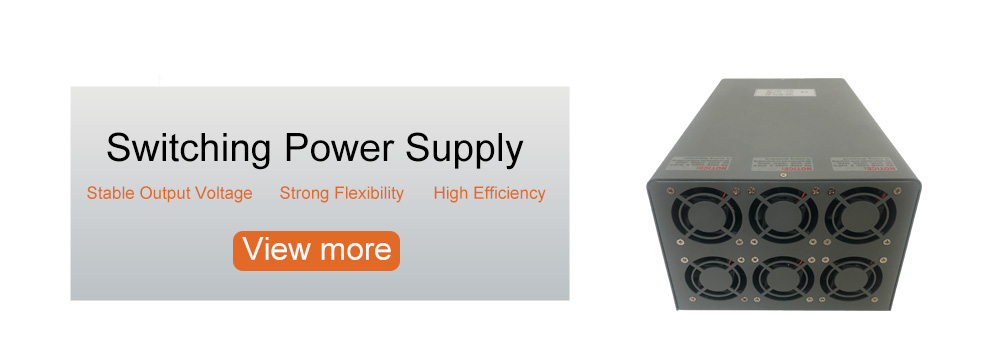Switching power supply (Switching Mode Power Supply), also known as switching power supply. Switching converter is a high-frequency power conversion device. Switching power supply is a power supply that uses modern power electronics technology to control the time ratio of the switch tube to open and close to maintain a stable output voltage.
The switching power supply is generally composed of a pulse width modulation (PWM) control IC and a MOSFET. In the use of switching power supplies, in order to select devices such as MOSFET, capacitors, and diodes, we need to evaluate the effective current of various working states of the device.
Because at the beginning, when we used the concept of effective current, it was alternating current, and the alternating voltage was applied to both ends of the resistor, such as an incandescent lamp or a heating wire, so our most common calculation of effective current is the calculation of the effective current of a sinusoidal alternating current.
1. How to calculate the input current of a switching power supply?
The input current of a switching power supply can be calculated using the following formula: Input current = Output power / Input voltage.
The input current is the current drawn by the power supply from the power grid, which is proportional to the output power and input voltage. When the output power increases or the input voltage decreases, the input current will also increase accordingly.
In addition, the input current of a switching power supply is also affected by the efficiency and power factor of the power supply.
The higher the efficiency, the smaller the input current; the higher the power factor, the smaller the input current. Therefore, in practical applications, the effects of the efficiency and power factor of the power supply on the input current also need to be considered. In addition, the input current of a switching power supply also needs to consider the changes in the load.
When the load changes significantly, the input current will also change accordingly. In short, the calculation of the input current of a switching power supply needs to consider the combined effects of factors such as output power, input voltage, efficiency, power factor, and load.
2. How to calculate the input current of a switching power supply?
If a 250W switching power supply does not have PFC, the power factor is generally 70%, and if it has APFC, the power factor is generally 98%. The efficiency of current switching power supplies is generally above 85%.
So we know that the maximum input current of 220VAC should be 250/85%/70%/220=1.9A. When choosing a switch, you should have a rainfall of 1.9*1.5=2.8A, which means you should choose a 3A switch.
Extended information
Output power = output voltage x output current, these two parameters should be on the nameplate of the power supply.
Input power = output power/efficiency.
The efficiency is generally 0.7 for less than 5W, 0.75 for 5-12W. 0.8 for 12W-24W, and 0.8-0.92 for more than 24W.
According to the above method, you should be able to calculate the power of your power supply.
Capacity 7VA
Voltage 5v, 12v
How are the capacities of these two voltages distributed?
Through theoretical calculation:
If the capacity can be 100% in a single channel, it can be calculated like this, only 5V, 7VA/5V=1.4A, only 12V, 7VA/12V=0.58A
If the capacity is 50% in each channel, it can be calculated like this, 5V distribution capacity 3.5VA, 3.5VA/5V=0.7A, 12V distribution capacity, 3.5VA/12V=0.29A
In actual measurement with a meter, the switching power supply cannot be measured by short circuit, and the short circuit will automatically protect and stop the output.
Take a resistance wire to make a simple sliding rheostat and connect an ammeter in series to the output end of the switching power supply. While reducing the resistance value of the resistance wire, detect the voltage. When the voltage is 10% lower than the rated voltage, the current at this time is the maximum current.
3. Switching power supply, can the output current be greater than the input current?
Because the output voltage is much lower than the input voltage, for example, when the input voltage is 220V and the output voltage of the power supply is within 44V, the output current can reach 5 times the input current within 3A, that is, within 15A, because ideally, the input power is equal to the output power. In fact, according to the power efficiency, the output power is less than the input power, but because the output voltage is low, the output current can be larger.
4. Does the input current of the switching power supply have an impact?
No
There is no impact of different input currents.
The input current written on the actual power supply nameplate is larger than the actual working current to ensure that the safety regulations for input current are met under various transient conditions. As long as the output indicators are the same, there is no impact on use
Thank you for reading this article, I hope this information will be helpful to you!
IDEALPLUSING: Power Expert
IDEALPLUSING,focus on the research and development, sales and service of DC to DC power supply module,AC to DC rectifier module,
DC to A C inverter, AC power supply, DC power supply, LED power supply, charger,rectifier system and other fields,to provide
personalized, efficient, reliable and cost-effective power supply solutions for all industries.
It will not cost you one cent when you ask us anything, but it may be a chance for both of us!
Our dedicated team endeavors to respond within one hour.
Thank you for considering our services.








